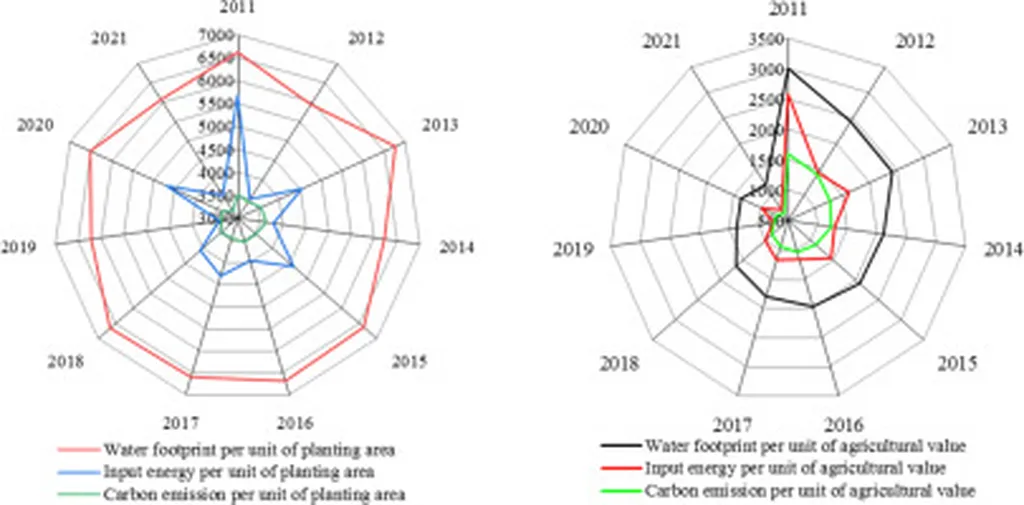In the heart of China’s Sichuan Province, a groundbreaking study is shedding light on the intricate dance between water, energy, and carbon in agricultural production. Led by Yinhong Kang from the College of Water Conservancy and Hydropower Engineering at Sichuan Agricultural University, this research is not just about crops; it’s about the future of sustainable agriculture and its profound implications for the energy sector.
The study, published in the journal *Energy Nexus* (translated from Chinese as “Energy Interconnection”), delves into the temporal-spatial evolution and coupling analysis of the water-energy-carbon nexus. It’s a mouthful, but the implications are vast. “Understanding these interrelationships is crucial for achieving sustainable and coordinated development of regional agriculture,” Kang emphasizes. The research quantifies water consumption, energy utilization, and carbon emissions, providing a comprehensive picture of their intricate relationships.
From 2011 to 2021, the study revealed that annual water consumption in Sichuan’s agricultural sector was a staggering 6.25 × 1010 cubic meters. Energy inputs and outputs were 4.07 × 1010 megajoules and 6.71 × 1011 megajoules, respectively, while carbon emissions and sinks were 3.35 × 1010 kilograms and 1.31 × 1011 kilograms. These numbers are not just statistics; they are a call to action for the energy sector to innovate and adapt.
The spatial density of the water footprint, energy input, and carbon emissions exhibited decreasing trends, suggesting a continuous weakening of their agglomeration effects. This spatial analysis, conducted using standard deviation ellipse analysis and spatial autocorrelation analysis, highlights the need for targeted interventions in specific regions. “The HH clusters for water footprint, energy input, and carbon emissions were mainly found in the northeast Sichuan region,” Kang notes, pointing to areas that require immediate attention.
The coupling degree of the water-energy-carbon nexus showed good performance, with the coupling coordination degree ranging between 0.3 and 0.5. This means that while there is room for improvement, the current state is not dire. The study suggests measures such as adopting integrated water and fertilizer management, partially replacing chemical fertilizers with organic manure, and promoting no-till and minimum-till farming practices. These recommendations are not just for farmers; they are for the entire energy sector, which must evolve to support these sustainable practices.
The implications for the energy sector are profound. As agriculture becomes more efficient and sustainable, the demand for energy will shift. Innovations in renewable energy, water management, and carbon capture technologies will be crucial. The study provides valuable insights for coordinated management and sustainable development in agriculture, but it also serves as a roadmap for the energy sector to adapt and thrive in a changing landscape.
In the words of Yinhong Kang, “This study provides valuable insights for coordinated management and sustainable development in agriculture.” But it’s more than that. It’s a beacon for the energy sector, guiding it towards a future where sustainability and efficiency are not just goals but realities. As we stand on the brink of a new era in agriculture, the energy sector must rise to the challenge and embrace the opportunities that lie ahead.

